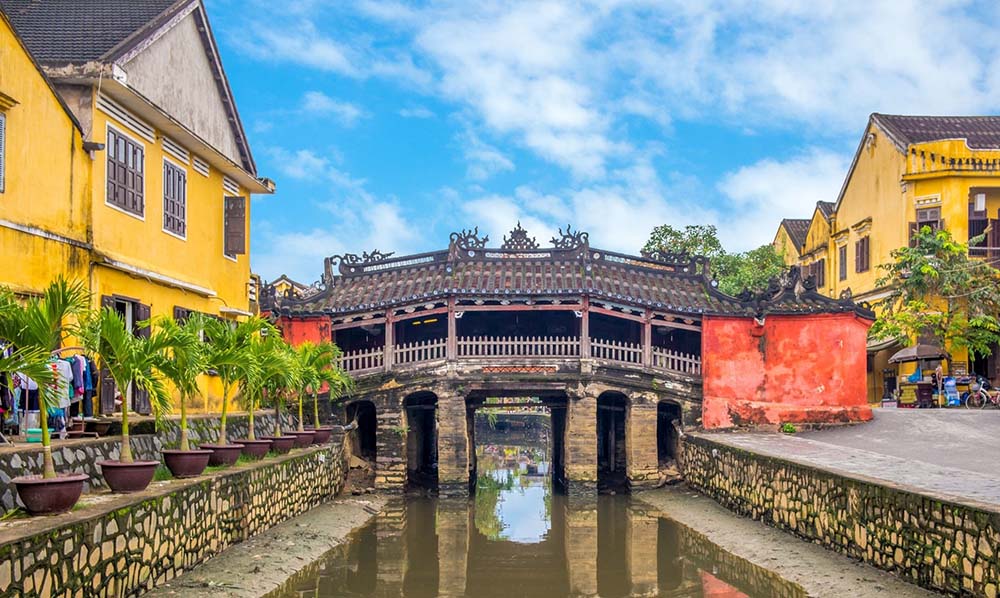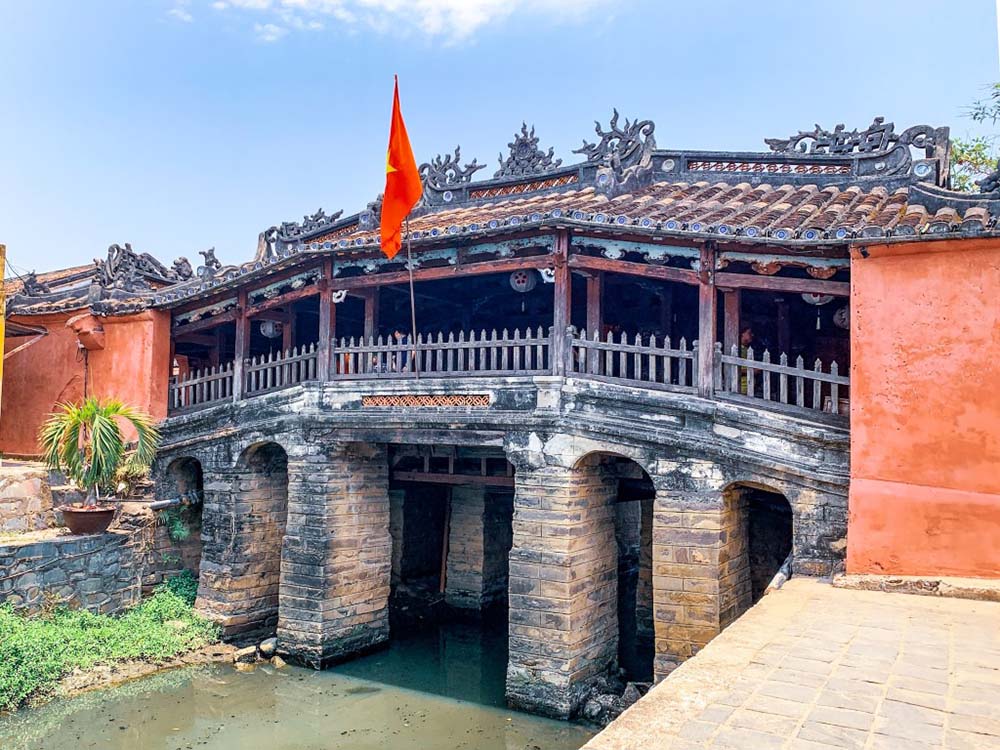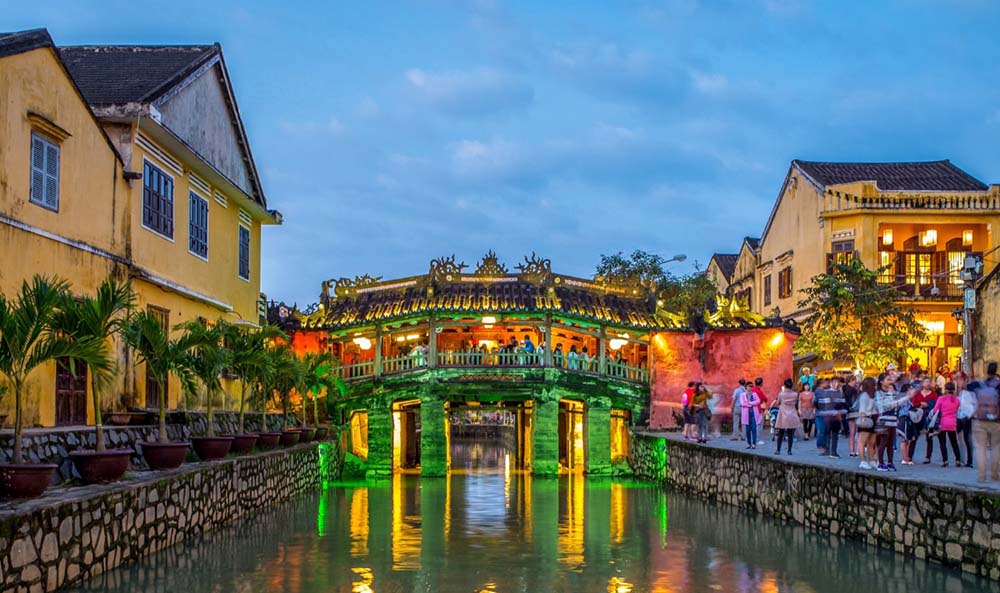Discover the fascinating history and cultural significance of the Japanese Covered Bridge in Hoi An, Vietnam. Learn about its unique architectural features and the role it played in connecting the Japanese and Chinese communities in this ancient trading port.
List of Contents
1. Overview of Japanese Covered Bridge

Hoi An Ancient Town, a UNESCO World Heritage Site, stands as a living museum of Vietnamese history. Here, centuries-old architecture meets vibrant traditions.
The Japanese Covered Bridge reigns as the town's most iconic landmark. This structure embodies Hoi An's unique cultural fusion and symbolizes the historical ties between Vietnam and Japan.
2. History of the Japanese Covered Bridge
Japanese merchants built the covered walkway in the early 17th century. Known locally as Chùa Cầu, it linked the Japanese community to the Chinese quarters across the Thu Bon River. Legend says the bridge was built to subdue the Namazu, a mythical creature causing earthquakes and floods.
The Japanese believed this construction would pin down the monster, preventing disasters. On February 17, 1990, the historic bridge was declared a National Historic – Cultural Heritage Site.
3. Architectural Features

The Japanese Covered Bridge spans 18 meters, connecting Tran Phu Street with Nguyen Thi Minh Khai Street. Its design blends Japanese, Vietnamese, and Chinese architectural styles. Red lacquered wood forms the main structure, supported by a stone base, showcasing 17th-century craftsmanship.
A curved roof shelters the passageway and enhances its beauty. Yin and yang patterns adorn the roof, symbolizing harmony in Vietnamese culture. Statues of monkeys and dogs guard each entrance, representing the years of the bridge's construction and completion in Japanese tradition.
Inside, a small temple honors Tran Vo Bac De, the northern deity of weather. This shrine highlights the spiritual significance of the Japanese Covered Bridge. Locals worship here, seeking protection from natural calamities.
4. Renovations and Preservation
The Japanese Covered Bridge has undergone significant renovations to maintain its structural integrity and historical value. Since its construction in the early 17th century, the bridge has seen seven major renovations:
- 1763: The first recorded renovation was undertaken by the Minh Huong Commune, focusing on reinforcing the bridge's structure.
- 1815: Another extensive repair was carried out by the local community to address wear and tear.
- 1875: This renovation involved contributions from local businessmen, aiming to preserve the bridge’s unique architectural features.
- 1917: During the French colonial period, the bridge was renovated again, with funding from both the French administration and local sources.
- 1962: The Quang Nam provincial government led this renovation to address structural damage caused by time and the elements.
- 1986: This substantial restoration was led by the Ministry of Culture, Sports, and Tourism, focusing on the roof and floor.
- 1996: The most recent of the seven major renovations, which involved extensive repairs to ensure the bridge's longevity.
In 2020, recognizing the bridge's deteriorating condition due to frequent flooding and aging infrastructure, the Quang Nam provincial government approved a nearly one-million-dollar preservation project. This effort aims to restore the Japanese Covered Bridge to its former glory while ensuring its structural stability for future generations.
5. Cultural Significance
The Japanese Covered Bridge stands as a national icon. Its image graces the 20,000 VND banknote, cementing its status as a treasured landmark. This historic structure embodies more than stone and wood.
Within its walls, a small temple honors TranVo Bac De, the weather deity. Locals pray here for protection and blessings. The bridge embodies Hoi An's multicultural heritage. Japanese builders, Chinese influences, and Vietnamese soil created this unique architectural blend. Tourists flock to witness this cultural tapestry firsthand.
6. Visiting the Japanese Covered Bridge

6.1. Location Of The Japanese Covered Bridge
The covered walkway connects Tran Phu Street with Nguyen Thi Minh Khai Street in Minh An Ward. Its central location in Hoi An Ancient Town ensures easy access for all.
6.2. Visiting Hours and Ticket Information
The historic bridge welcomes visitors around the clock. Entry requires a general ticket to Hoi An's monuments. Vietnamese pay 80,000 VND, while international visitors pay 150,000 VND.
6.3. Best Time to Visit and Nearby Attractions
For a peaceful experience, visit the Japanese Covered Bridge between 9:00 a.m. and 3:00 p.m. Evening visits offer a chance to see the illuminated structure in all its glory.
While in the area, consider visiting other notable attractions nearby:
- Quan Cong Temple: A significant religious site dedicated to the revered Chinese general Quan Cong.
- Phuc Kien Assembly Hall: Known for its stunning architecture and cultural significance, this hall is a must-see.
- Tan Ky Ancient House: A well-preserved 18th-century merchant’s house offering insights into the life and architecture of Hoi An's past.
6.4. Tips for Visitors
To make the most of your visit to the Japanese Covered Bridge, consider the following tips:
- Hire a Tour Guide: Engaging a local tour guide can enhance your experience with detailed historical and cultural insights.
- Participate in Local Activities: Join in folk games and watch street performances in Hoi An Ancient Town, especially from 7:00 p.m. to 8:30 p.m. daily.
- Explore Hoi An Ancient Town: Spend time wandering the ancient streets, visiting other historical sites, and enjoying the local cuisine.
7. How to Get to Japanese Covered Bridge
The Japanese Covered Bridge is easily accessible within Hoi An Ancient Town. If you're staying in or around Hoi An, you can reach the bridge by walking or cycling through the town's picturesque streets. The town's compact size makes it convenient to navigate on foot or by bicycle.
For those traveling from further afield, here are some options:
- From Da Nang: Hoi An is about 30 kilometers from Da Nang. You can take a taxi, a private car, or a shuttle bus from Da Nang to Hoi An. The journey takes approximately 45 minutes.
- From Hanoi or Ho Chi Minh City: Fly into Da Nang International Airport and then follow the instructions above to reach Hoi An.
Upon arriving in Hoi An, head towards the ancient town center and make your way to Tran Phu Street. From there, it’s a short walk to the western end where the Japanese Covered Bridge is located.
8. Interesting Facts
8.1. Historical Context and Local Folklore
The Japanese Covered Bridge stands as more than stone and wood. Built in the early 17th century, it linked Japanese and Chinese quarters.
Legend says it tamed the Namazu monster. This mythical beast caused earthquakes and floods. The bridge pinned it down, bringing peace to Hoi An.
8.2. Unique Architectural Elements
The historic structure spans 18 meters of red lacquered wood. A stone base supports it. Its curved roof bears yin and yang patterns, symbols of harmony.
Monkey and dog statues guard the entrances. These represent the years of construction and completion. Inside, a temple honors Tran Vo Bac De, the weather deity.
8.3. Cultural Blend in Design
The Japanese Covered Bridge embodies cultural fusion. Japanese artisans built it, yet Vietnamese and Chinese influences shine through.
This blend appears in materials, patterns, and decorations. The bridge united communities in 17th century Hoi An, both physically and symbolically.
9. Conclusion
The Japanese Covered Bridge stands as Hoi An's cultural beacon. Its construction in the early 1600s marks a pivotal moment in the town's history.
The Japanese Covered Bridge offers a timeless glimpse into Hoi An's harmonious cultural blend. It remains an enchanting destination, bridging past and present.
After admiring the iconic Japanese Covered Bridge, dive deeper into the wonders of Hoi An. Our Hoi An Travel Guide provides essential information for making the most of your visit to this enchanting UNESCO World Heritage Site.
Discover the top Things to Do in Hoi An, from strolling through the colorful Old Town to savoring delectable local cuisine. With its rich history, stunning architecture, and vibrant culture, Hoi An offers a captivating experience for every traveler.
FAQ
What happened to the Japanese Covered Bridge in Hoi An?
The Japanese Covered Bridge underwent renovations in 1817, 1865, 1915, and 1986, incorporating Vietnamese and Chinese architectural elements over time, replacing its original Japanese features. The structure is currently sinking due to underground erosion, and efforts are underway to prevent its collapse.
What is the famous Japanese Covered Bridge?
This iconic bridge in Hoi An, built in the 1590s by the Japanese community to connect with the Chinese quarters, is a symbol of the town. Despite the passage of centuries, the bridge's ornamentation has largely retained its original Japanese design.
What is a Japanese-style bridge called?
A Japanese bridge, or hashi, often brings to mind a red, arched structure. This type of bridge is known as soribashi in Japanese, and it originated from China during the Heian period (794-1185).






